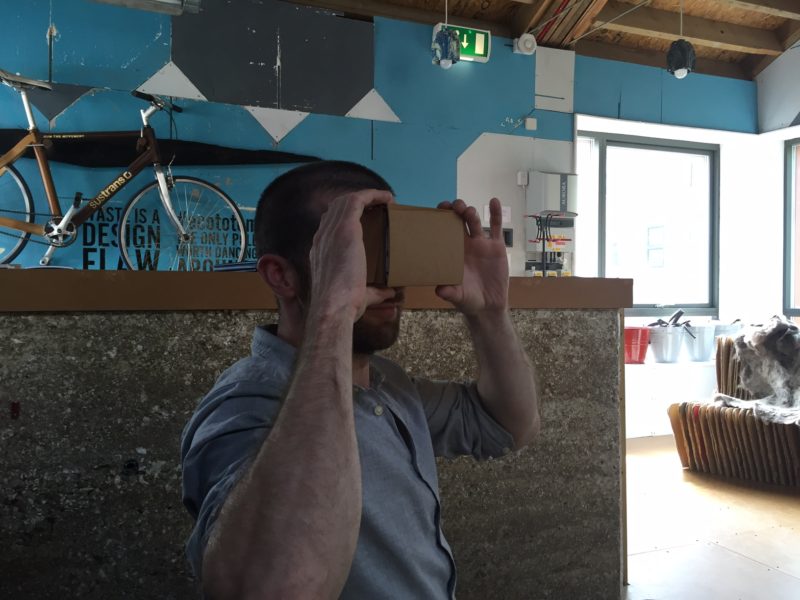One of the most innovative and exciting ideas to come out of this year’s Designing for the Future with the University of Brighton was Tom Meades’ project which aims to use Virtual Reality to creative immersive experiences for people living with dementia.
“My project began with researching the issues of stress in people with dementia. People living with dementia commonly experience huge amounts of stress due to a misunderstanding of their surroundings. In mid-late stage patients, recent years are forgotten and only a memory of how the world was in their 20’s remains. This insight led me to an exploration into how we could provide comfort for those patients, trying to relieve some of the stress experienced, resulting in a happier more fulfilling life.
I began studying other design solutions to memory-loss. Designing for the Future alumna Chloe Meineck’s Music Memory Box worked fantastically in evoking memories from the past, giving Alzheimer’s sufferers comfort in their surroundings. I wanted to discover how these physical objects can trigger stress-relieving experiences, and how we could use technology to increase these effects to benefit future patients.
Memory Maps by Copenhagen institute of Interaction Design students focused on memories from now, that could be recorded and shared between families to benefit Alzheimer’s patients. They recorded stories and memories through an audio device at specific locations, which could then be re-experienced walking around an area with headphones on. This inspired me to use already recorded information from Facebook (frequently visited locations, music shared, friends spoken too) and to create a space that can be individual to a User. Facebook own around 1.65 billion user-accounts, that all store an individual’s information. Mark Zuckerberg has recently showed huge interest in Virtual Reality software, buying Oculus Rift for $2 billion.
My idea is to create immersive experiences that provide calming environments for Alzheimer’s patients to escape into. These will be completely user-specific, which will be accessible through a process similar to ‘Logging On’ on Facebook. Today, basic VR products such as Google Cardboard gives users the ability to access any location worldwide through the Maps application. By adding in interactive abilities, 1.65 billion people could be immersed in an environment that mimics life in their twenties.
In these spaces, people could communicate with old friends (Using same colloquialism, due to information input from Facebook), and view old photos and videos that would feel very relevant to patients. Due to Chloe Meineck’s product-research being so effective in calming people with Alzheimer’s, I am certain that we can harness modern technology to create easily-accessible, stress-free care homes through the use of immersive Virtual Reality experiences.
I have created a virtual space that is specific to me, based on my childhood in rural Worcestershire. Here I have views of the Malvern Hills, farm buildings, large fields and animals that roam around. This is accessible through Google Cardboard, and can be downloaded onto any Android device. I hope to develop this project further by working with experienced Game Designers, to refine a very detailed memory-evoking immersion“

